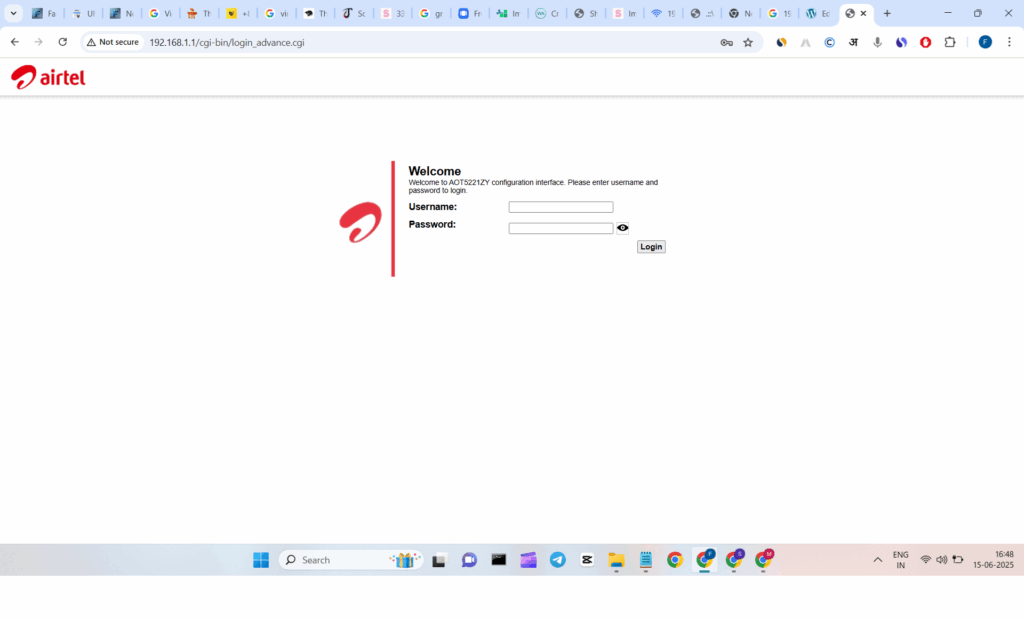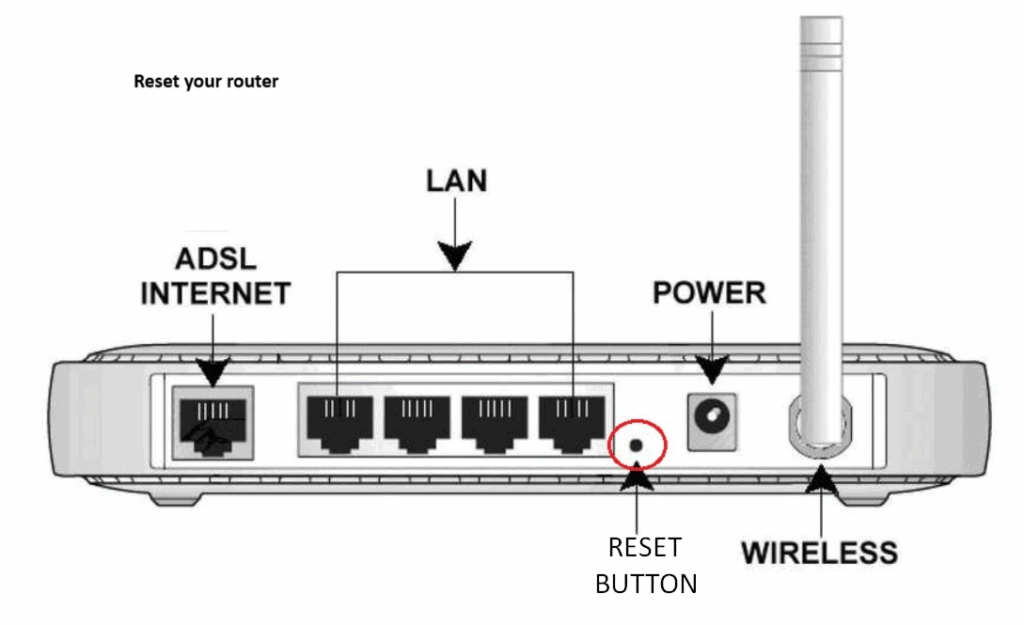If you’re trying to log in to your Wi-Fi router using 192.168.1.1, but you’re stuck or seeing errors, this step-by-step guide will help you access the router admin panel and fix common problems.
Or if you are some who want to access 192.168.1.1 in your device but you are unable to do so then this article is perfect for you. Soon you will learn why you are facing an issue in accessing it and hopefully after going through this article you will be able to open 192.168.1.1 in your web browser.
Well, whether you’re trying to log in to your router, set a Wi-Fi password, or simply understand what this number does, you’ll find clear answers here. Let’s get started.

What is 192.168.1.1 and Why Should You Care?
Think of 192.168.1.1 as the “home address” of your internet router inside your house. It’s a private IP address that your devices use to talk to the router. You can’t visit this IP from outside your home, and that’s a good thing — it helps keep your network private and secure.
When you type http://192.168.1.1 into a web browser, you’re opening your router’s admin panel — the place where you can:
- Change your Wi-Fi name and password
- Set up parental controls
- See who’s using your network
- Improve your internet security
This address is used by popular router brands like Linksys, Asus, TP-Link, and D-Link, making it a standard entry point for home networking.
A Quick History of Private IPs
In the 1990s, tech experts realized the world would soon run out of public IP addresses. So, they came up with RFC 1918, a set of rules that reserved certain IP ranges for private use, including:
- 10.0.0.0 – 10.255.255.255
- 172.16.0.0 – 172.31.255.255
- 192.168.0.0 – 192.168.255.255
Your router’s IP, 192.168.1.1, is part of this private range. It’s used inside your home, while your router uses NAT (Network Address Translation) to share one public IP with all your connected devices. That’s how your phone, laptop, and TV can all browse the internet at once.
How to Access 192.168.1.1 Step-by-Step
Even if you’re not tech-savvy, logging in to your router is easier than it sounds. Here’s how:
✅ Step 1: Connect to the Router’s Network
Make sure your device is connected to the router, either via Wi-Fi or Ethernet cable.
✅ Step 2: Open Your Browser
Use any browser (Chrome, Firefox, Edge, Safari).
✅ Step 3: Type http://192.168.1.1
Hit Enter. If nothing loads, double-check that you’re on the router’s network.
✅ Step 4: Enter Username and Password
You’ll see a login screen. Default credentials are often:
- Username: admin
- Password: admin, password, or 1234
Can’t find it? Check the label on the back or bottom of your router.
Troubleshooting: Can’t Access 192.168.1.1?
If the login page doesn’t appear, try these fixes:
- Check the IP address
On Windows, open Command Prompt and type:
ipconfigLook for “Default Gateway” — that’s your router’s IP. It might be 192.168.0.1 or 10.0.0.1.
- Use a wired connection
Wi-Fi might block admin access. Try using an Ethernet cable. - Clear typos
It’s easy to type “192.168.l.1” by mistake (that’s a lowercase “L” instead of a number). - Disable VPN or firewall
These tools might prevent access. Temporarily turn them off and try again.
What You Can Do Inside the Router Admin Panel
Once you’re logged in, you can configure almost every aspect of your network. Here are the most useful things you can adjust:
🔒 Change Wi-Fi Name and Password
Go to Wireless Settings and update your SSID (the Wi-Fi name) and password. Use a strong password with numbers and symbols.
🛡️ Secure the Router
- Change the default admin password
- Enable the firewall
- Use WPA2 or WPA3 for Wi-Fi security
🌐 Set Up Guest Wi-Fi
Create a separate network for visitors. It keeps your main devices safe.
🕹️ Port Forwarding
Allow certain games or apps to communicate with your router from outside. Useful for gaming or remote access tools.
👨👩👧👦 Parental Controls
Block websites, limit screen time, or create schedules for kids’ devices.
📶 Monitor Devices
See who is connected. If you spot an unfamiliar device, you can block it.
🛠️ Update Firmware
Firmware is like your router’s operating system. Keeping it up to date patches security flaws and boosts performance.
Security Tips Every User Should Follow
A router with weak security can let hackers into your network. Here’s how to lock it down:
✅ Change Default Admin Password
Do this immediately after logging in. Don’t use “admin” or your pet’s name. Make it long and hard to guess.
✅ Use WPA2/WPA3 Encryption
Avoid WEP — it’s outdated and easy to hack.
✅ Turn Off WPS
WPS makes it easy to connect to Wi-Fi without a password, but it’s also a big security hole.
✅ Enable Guest Network
Keep guests on a separate connection to protect your smart home devices.
✅ Check for Intruders
Look at the list of connected devices. If something looks strange (like “John-iPhone” and you don’t know a John), remove it.
How to Reset the Router (If You Forgot the Password)
If you’re locked out and can’t remember the password, you can reset the router:
- Find the Reset Button
Usually a small hole on the back in your router. - Power On the Router
It should be plugged in. - Press and Hold
Use a pin to press the button for 10–15 seconds until the lights blink. - Wait for Reboot
The router will return to factory settings, including the default IP and password.

⚠️ Warning: This will erase all custom settings. So you should write them down first if possible.
Other Default IP Addresses (Just in Case)
If 192.168.1.1 doesn’t work, your router might be using a different address. Here are some common alternatives:
- 192.168.0.1 – Used by older Netgear or D-Link models
- 10.0.0.1 – Common with Xfinity or business routers
- 192.168.1.254 – Some Cisco routers use this
These are all private IP addresses, meaning they’re only used inside your home or office.
Frequently Asked Questions
Q: What if I still can’t access the admin panel?
Double-check your IP address using Command Prompt or try another browser/device.
Q: Can I change the router’s IP address?
Yes, you can. Log in and go to LAN settings. You could set it to 192.168.2.1, for example.
Q: What’s the difference between my IP and my router’s IP?
Your device has an IP like 192.168.1.5, while the router is usually 192.168.1.1. Your device connects through the router to reach the internet.
Q: Is 192.168.1.1 accessible from outside my home?
No, it only works inside your network. That’s by design — to keep things private.
Final Thoughts: Why 192.168.1.1 Matters
Even though it looks like a bunch of random numbers, 192.168.1.1 is the key to managing your internet setup. Learning how to access and use it gives you control over your home network — and peace of mind.
Whether you want to kick off freeloaders, beef up security, or just rename your Wi-Fi to something fun like “FBI Van 13,” it all starts here.
So don’t be afraid to explore your router settings. With this guide, you’ve got the knowledge (and confidence) to take charge.
Was this helpful? Share this with friends or family who always ask you for help with Wi-Fi!